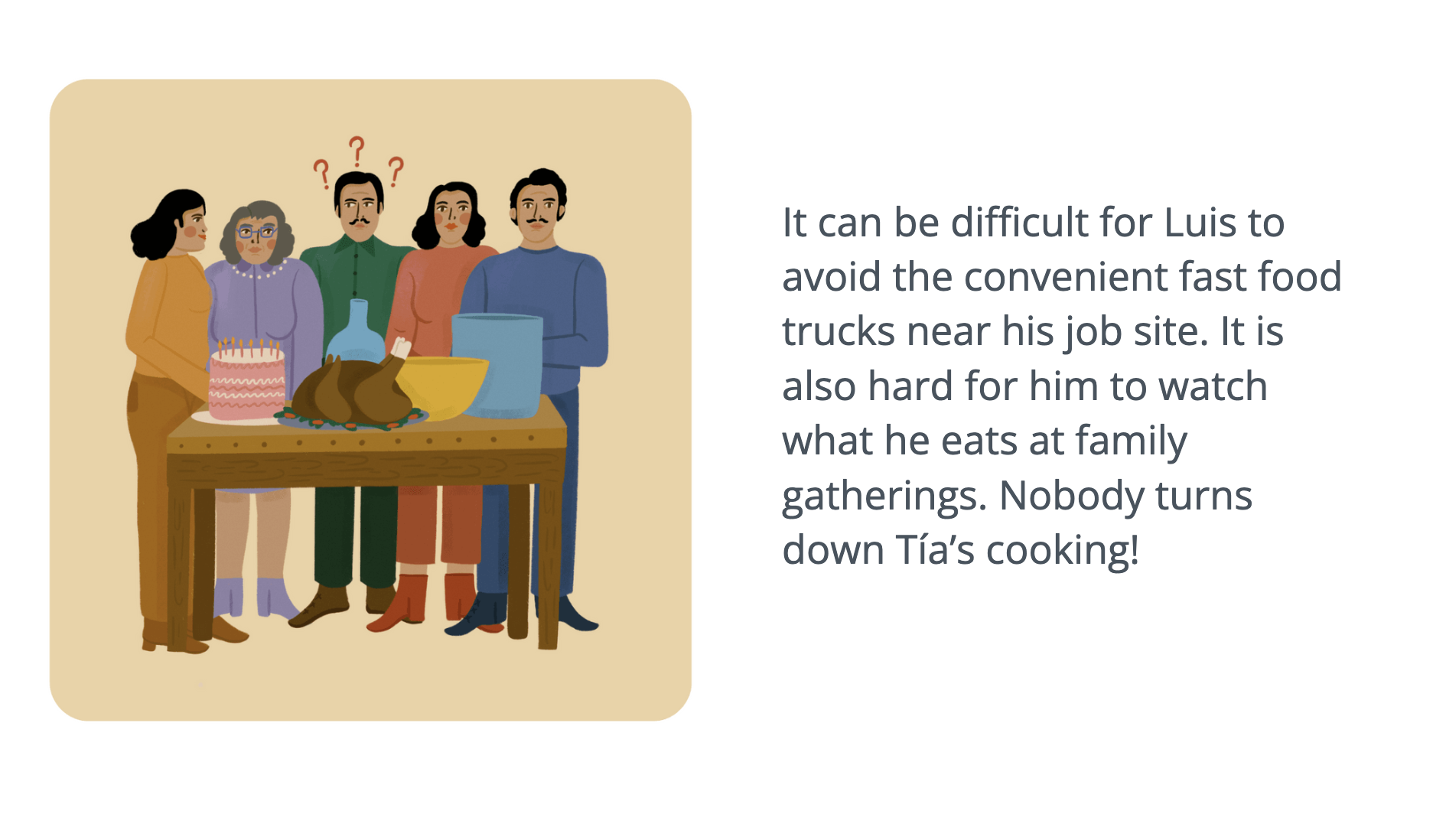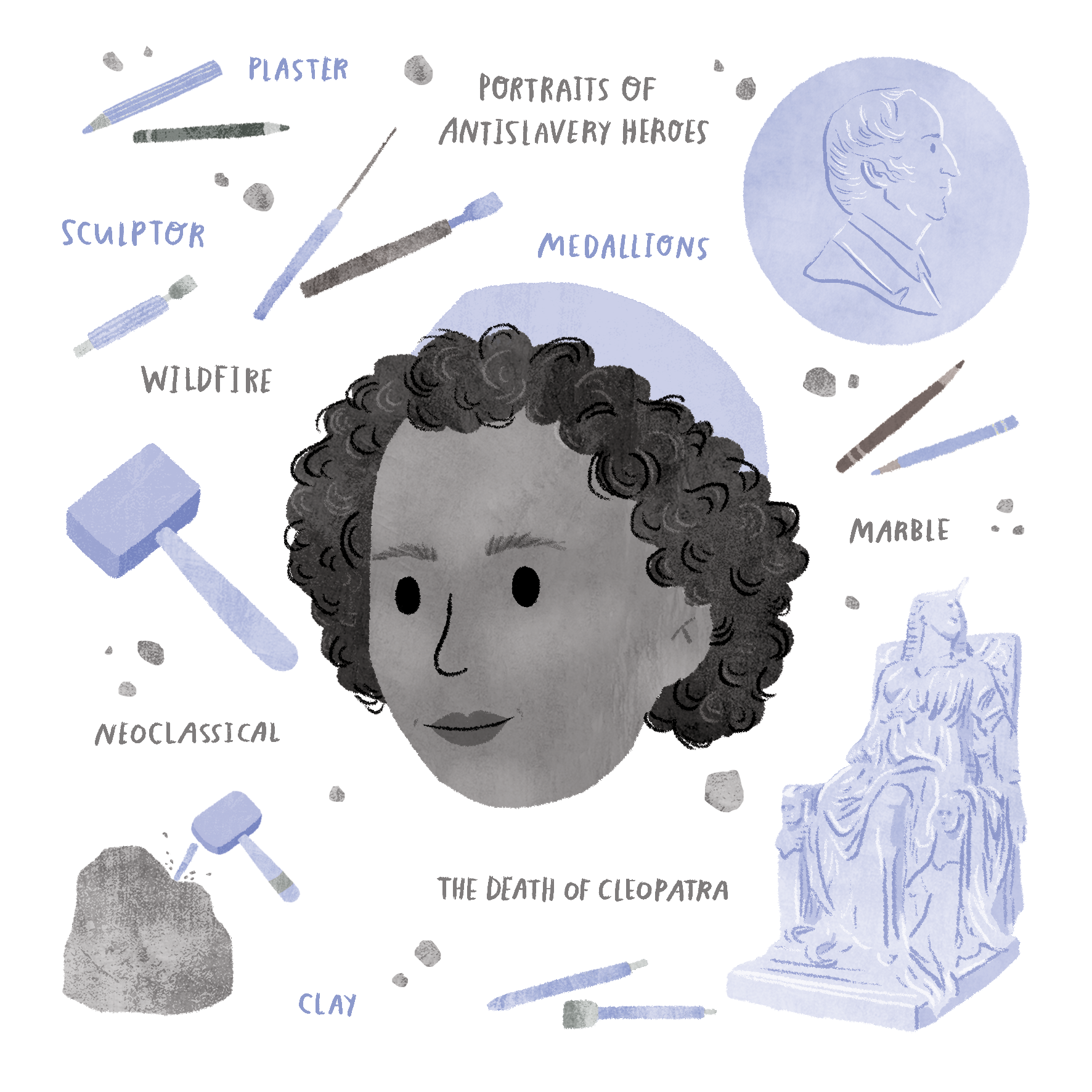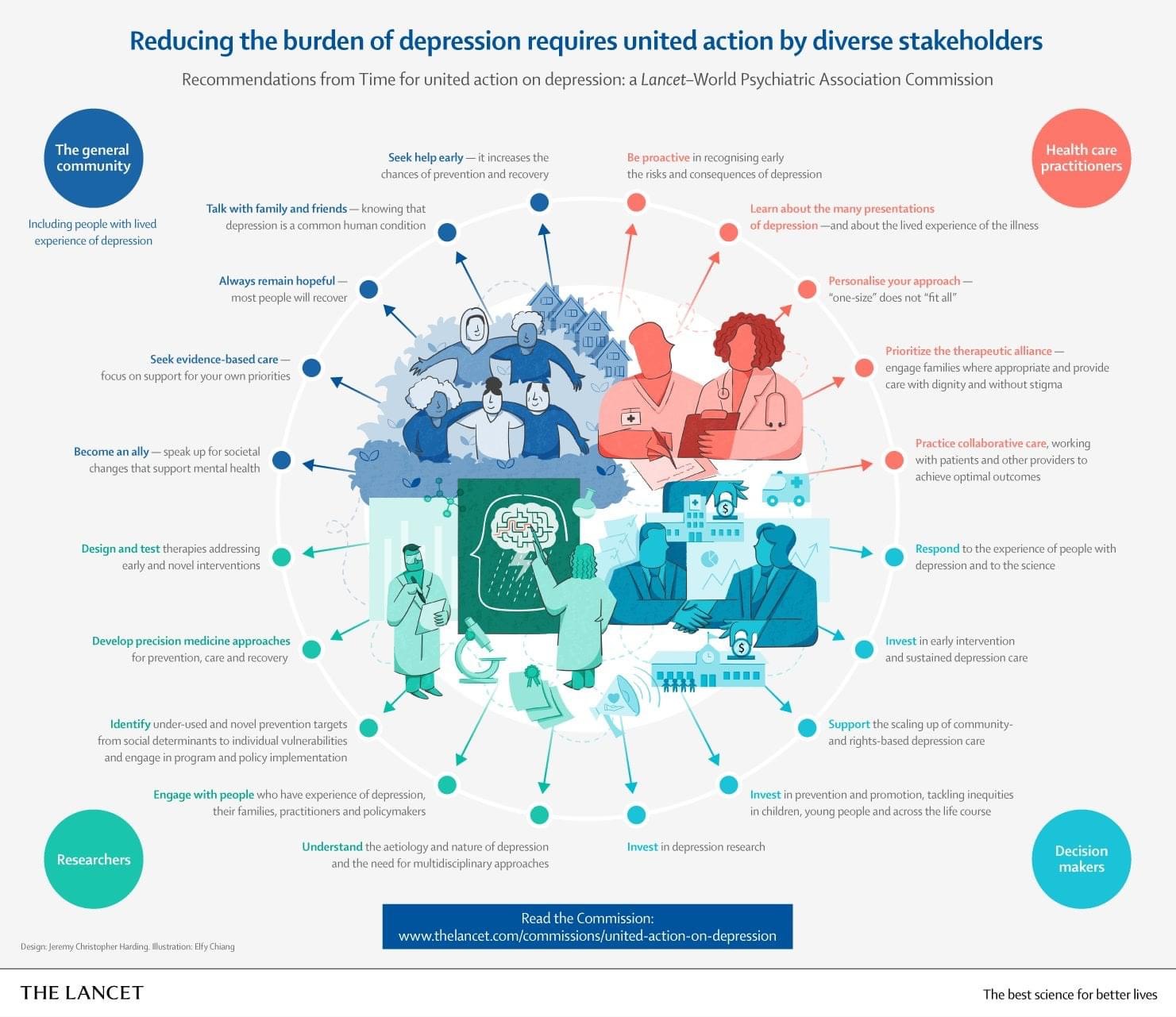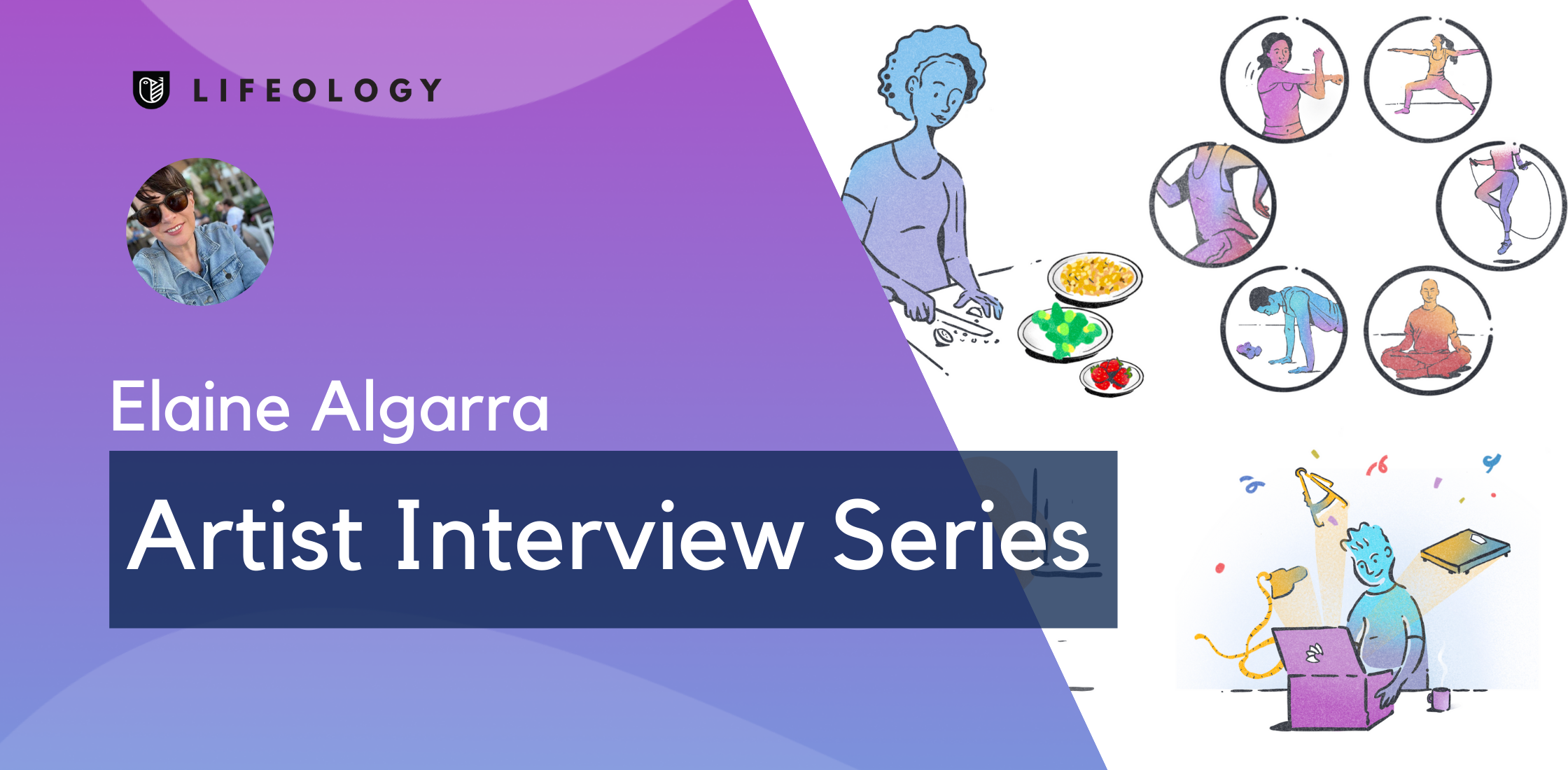
The Lifeology team has been busy working with health professionals, from mindfulness coaches to fitness experts to medical specialists. We have been creating a series of Lifeology courses for LIFE Ascent, a wellness program that gives subscribers the tools needed to improve their health. It is a program based on learning, measuring and establishing habits across multiple areas of health.
This blog features Elaine Algarra, a veteran art educator and Lifeology Communications Manager living in North Carolina. Elaine has a versatile skill-set. She loves collaborating with clients, artists and writers on wellness and health content. She also writes and illustrates wellness courses and loves planning and organizing behind the scenes.

Examples of high school student work from Elaine Algarra’s art classes.
Can you tell us a little about your background?
I’m the Lifeology Communications Manager. I currently spend a lot of time creating content for our wellness programs as well as managing workflow. I love working with Lifeology artists, collaborating on visual notes, storyboard feedback and watching the process of ideation through to final rendered pieces. My background is in Visual Art and Visual Art Education. I’m a licensed K-12 art educator in North Carolina and the United Kingdom, National Scholastic Educator Medal Winner, and taught AP Art and Design 2D Design and Drawing until last year. After 24 years in teaching, I decided to retire and brought my skill set over to Lifeology. I thoroughly enjoyed teaching art, and many of my students have gone on to have successful careers in art, from fine artists to designers to creatives working for ad agencies.
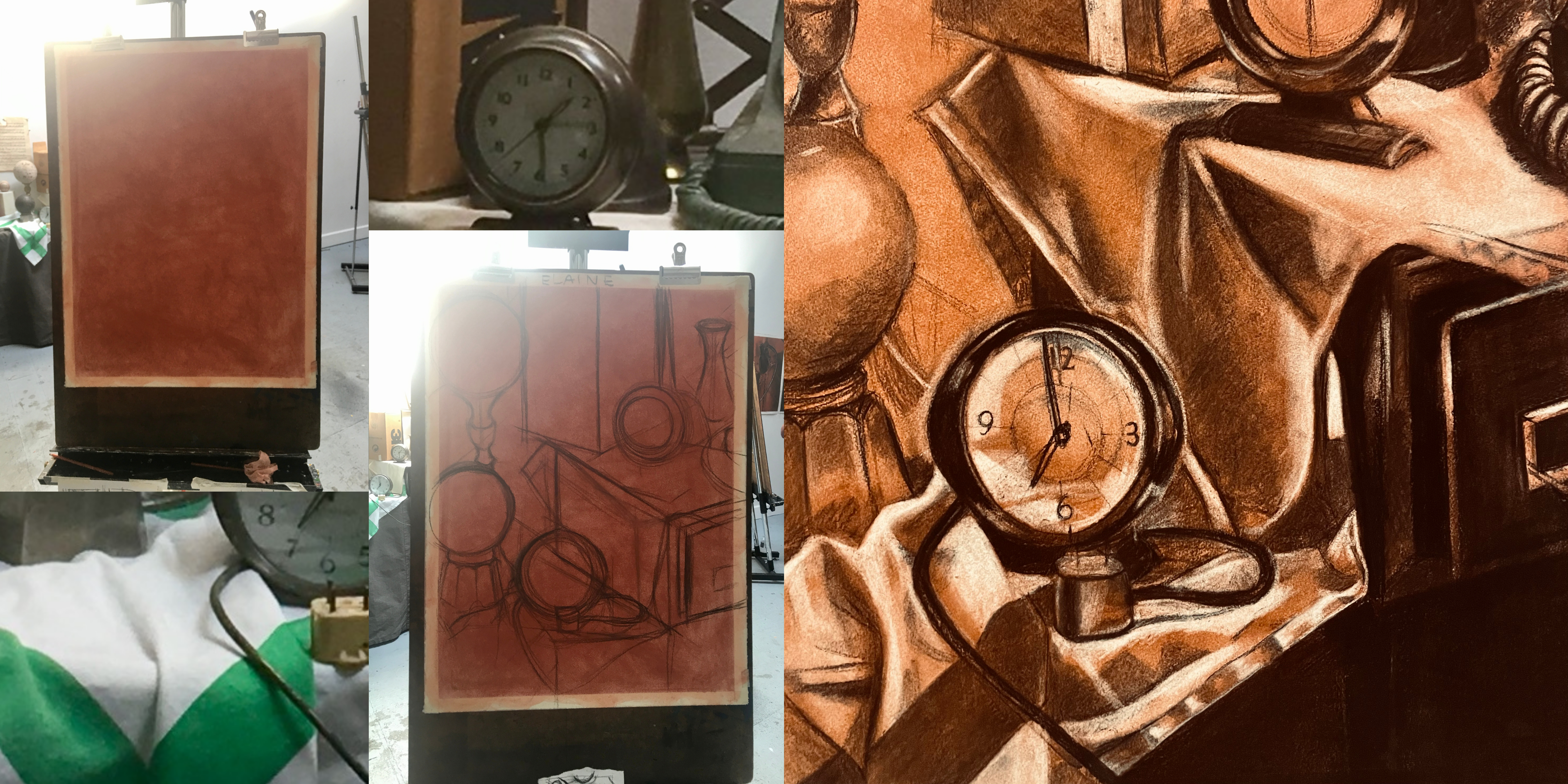
Charcoal drawing – work in progress – demonstrating additive and reductive drawing techniques. A ground is established with a line drawing in vine charcoal. The drawing is then worked into with vine and compressed charcoal and light values are lifted out using a putty eraser and pencil eraser. Elaine Algarra.
How did you find Lifeology?
Neither! Lifeology was the idea of Doryan, my husband. He co-founded Lifeology with Paige, and the rest is history! Neither one of us (Doryan and myself) comes from a science background but has an interest in science and health and a passion for making sure information is accessible to all – hence bite-sized courses where the visuals and text work together.
Have you illustrated a Lifeology card deck before?
I have illustrated several now, but you won’t find them published. They are part of the upcoming LIFE Ascent program. I’ve recently spent a lot of time collaborating with Doryan and illustrating together to expand a library of images for Lifeology courses. The first deck I illustrated was on Mindful Meditation. It was also my first time drawing digitally—my artwork before this used traditional media. I love painting in oils, acrylics and gouache. Charcoal is my favorite drawing medium, and I love experimenting with grounds and reductive drawing and painting techniques. This means drawing or painting by lifting out or wiping away.
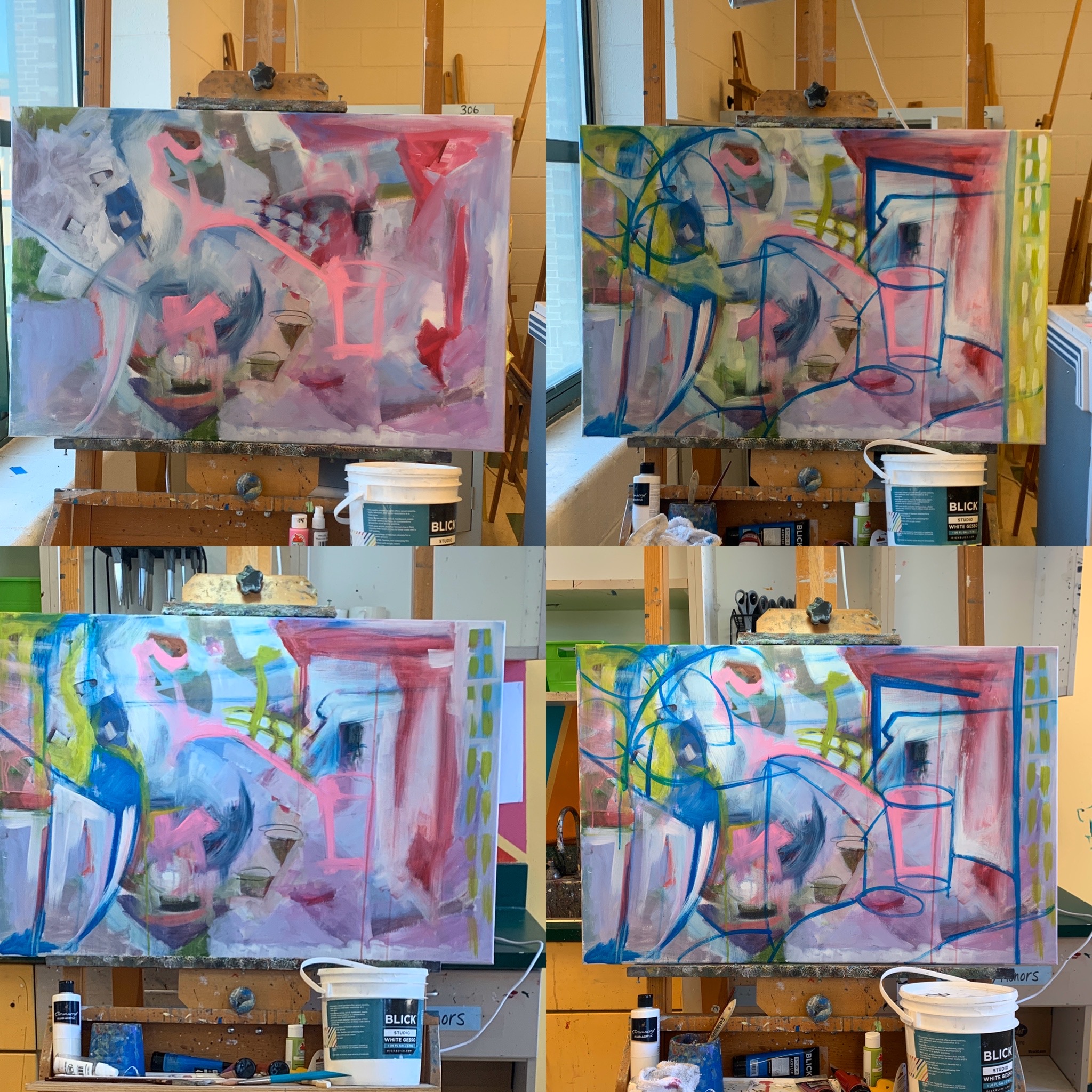
Acrylic painting in progress showing the exploration of layering with acrylic paint, modeling paste and gesso using a discarded painting.
Would you consider yourself a SciArtist?
I’m not a SciArtist. I don’t have expert knowledge in science, and that’s what I love about Lifeology. We sometimes use artists who are trained in medical illustration or science illustration. We also work with illustrators with a visual art background or visual communication background. The art we use needs to work on an empathetic and communicative level. I really enjoy working with illustrators, as they have a creative and emotional edge for storytelling. I also love working with SciArtists as they offer great technical insight and understanding of human anatomy and biological processes.
The courses you illustrated were for the introductory period of LIFE Ascent and include information about LifeOmic’s apps like LIFE Extend. When looking at the course scripts, what were your initial impressions?
I wrote the course scripts for the 4-week wellness. I asked myself a lot of questions along the way: What are the objectives? Which messages can I communicate? How do I want the reader to feel? How do the visuals enrich the text? How will the cards come to life, and what type of visual flow do I want? I also had the opportunity of illustrating a course on mindfulness that someone else wrote. I really enjoyed that challenge. I had many similar questions and wanted to build a visual flow and narrative story with a central character and lifestyle changes.
Below are two illustrations from LIFE Ascent. The course is What is meditation, and how can you use it to improve your health? This course was my very first attempt at drawing digitally and was a huge learning curve. As a teacher, I always felt it was important to demo techniques to my students. Likewise, I think I must understand the process of illustrating a Lifeology course.
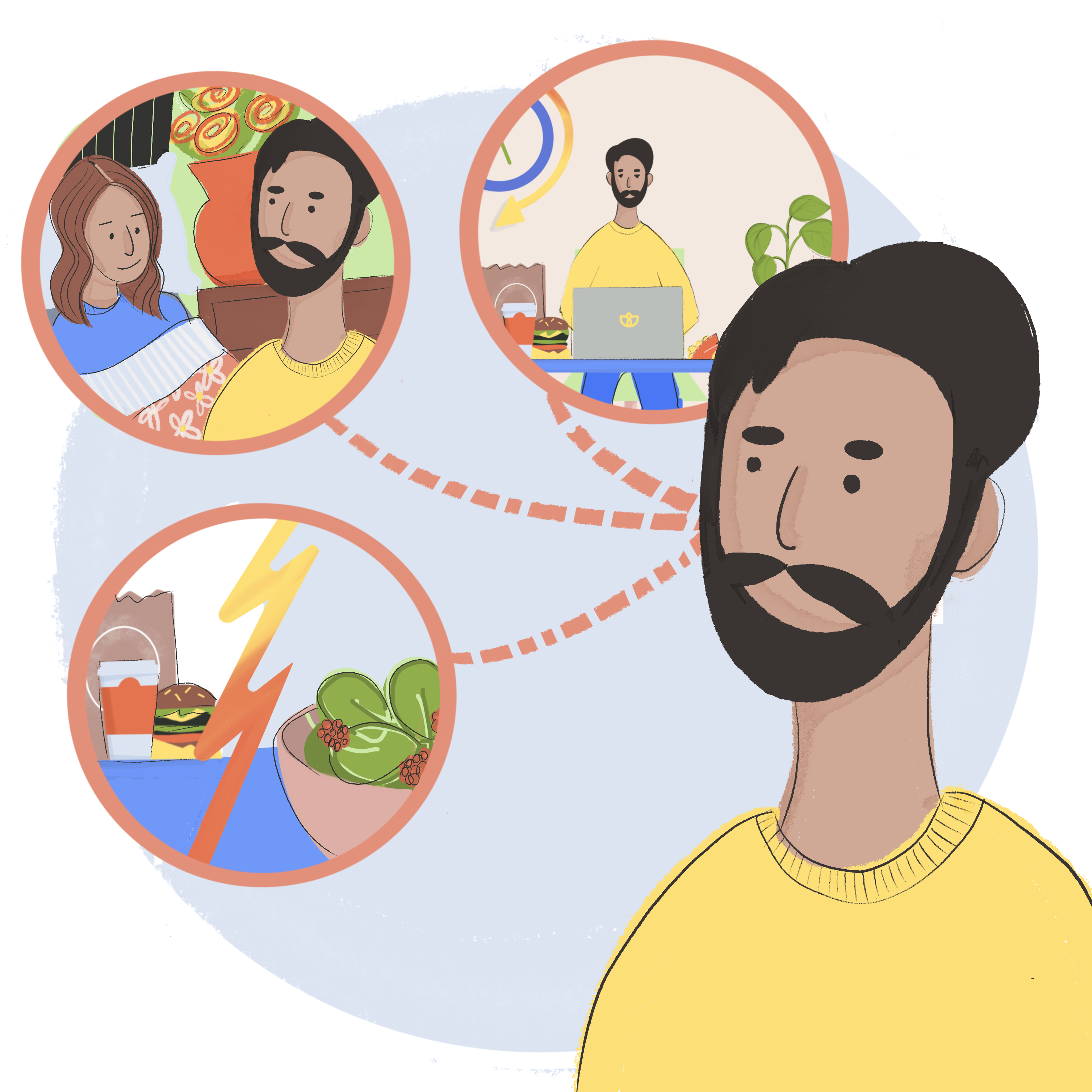
While helping his mom through her own health journey, Bob learns that his risk of cancer isn’t just about his “genes,” which he can’t control. Lifestyle factors can also influence his risk!
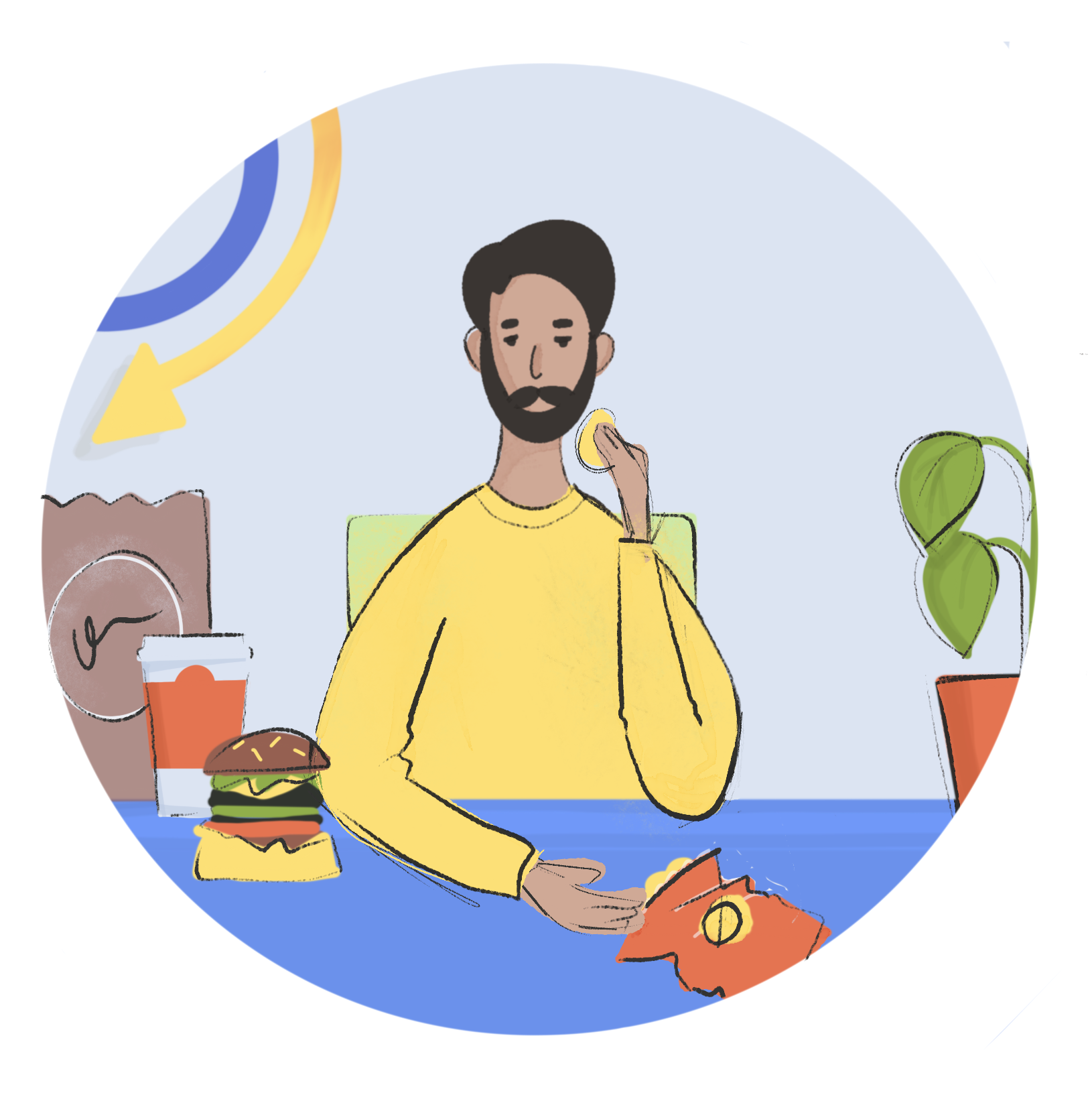
Bob often eats take-out or snacks from the vending machine at work. He also struggles to maintain a regular exercise routine. Lately, he has been gaining weight.
Do you use visual notes and storyboarding in other work?
Visual notes are a quick way of spitting ideas out on paper. I used visual note-making and brainstorming as part of my teaching process, especially when creating art based on big ideas and essential questions. They are a great starting point for thinking about possibility and flow. I also use a sketchbook. If I have an idea in my head I like to capture it in visual form. My sketchbooks contain a lot of words and thoughts as well as quick thumbnails. A sketchbook is my brain on paper, a lot of the time, I might not be able to communicate what I’m trying to do orally, but instead, I draw it.
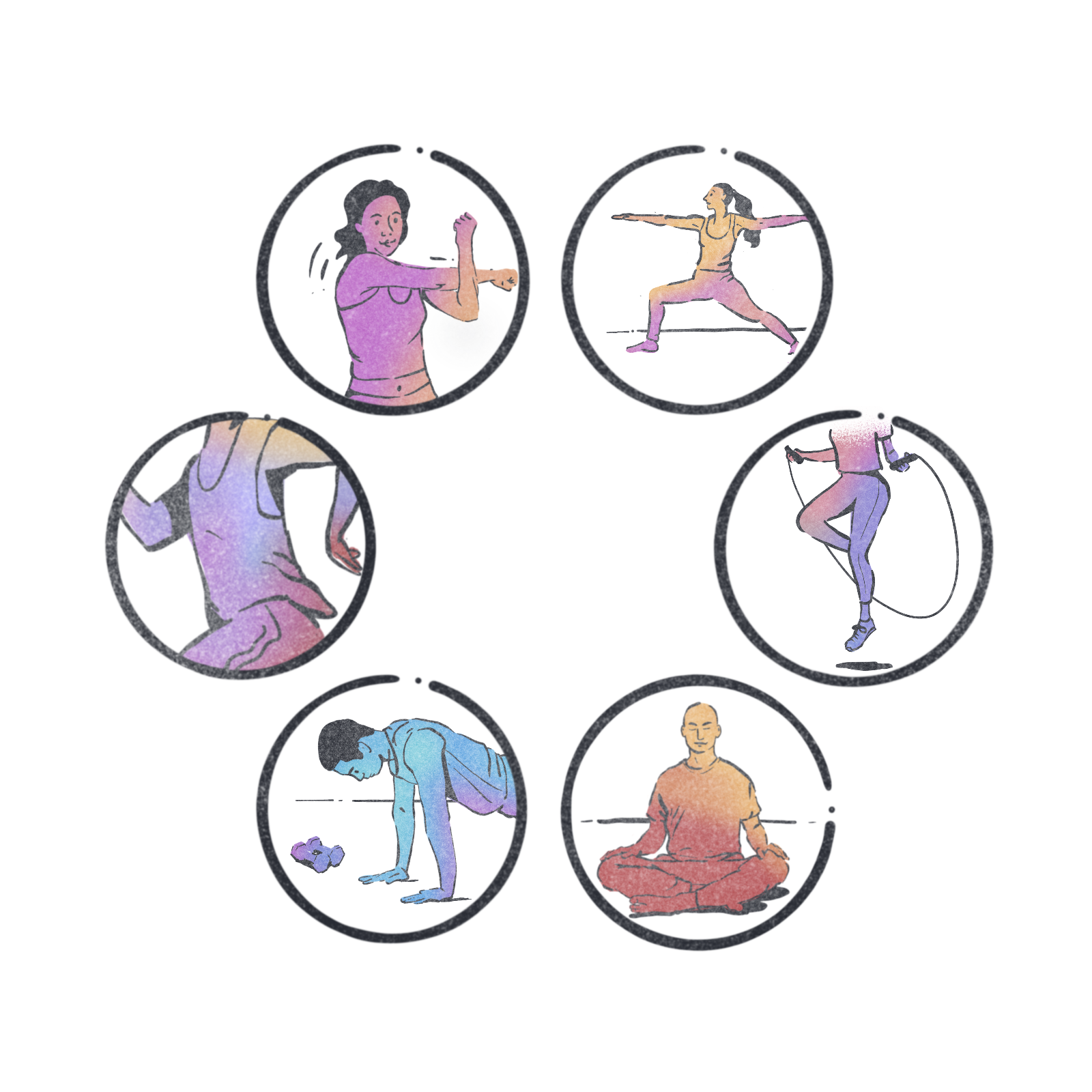
LIFE Ascent illustration showing a variety of types of exercise.
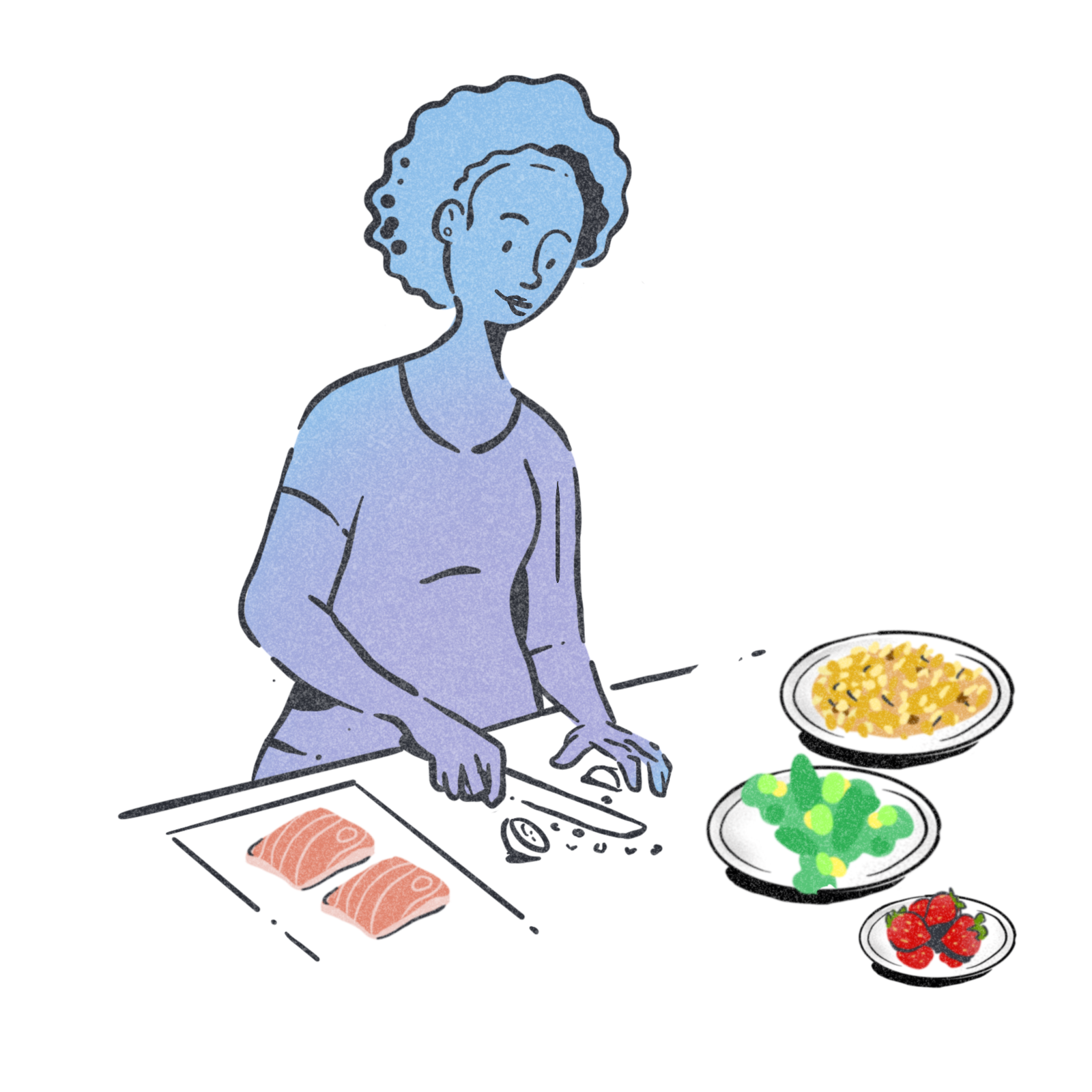
Establishing healthy habits by preparing whole foods for dinner.
Can you tell us a little more about how you get from visual idea to storyboard image to final rendered piece?
I read the text and then create a quick storyboard grid in procreate. I sketch my concept very quickly, and then I often talk my ideas through with my husband. It’s part of our working relationship. I also enjoy giving him feedback on what he’s working on, as two brains are better than one! I then take my storyboard and set up a color scheme palette. I’ve been using a very distinct color scheme with LIFE Ascent.
I tend to work on a 1600px canvas; I start with looking at my rough sketch, recreating a line drawing and then blocking in the color on the layer behind. I like to incorporate subtle textures, play around with masks and the alpha lock feature. I use a couple of brushes and textures.

Sleep Pillar illustration.
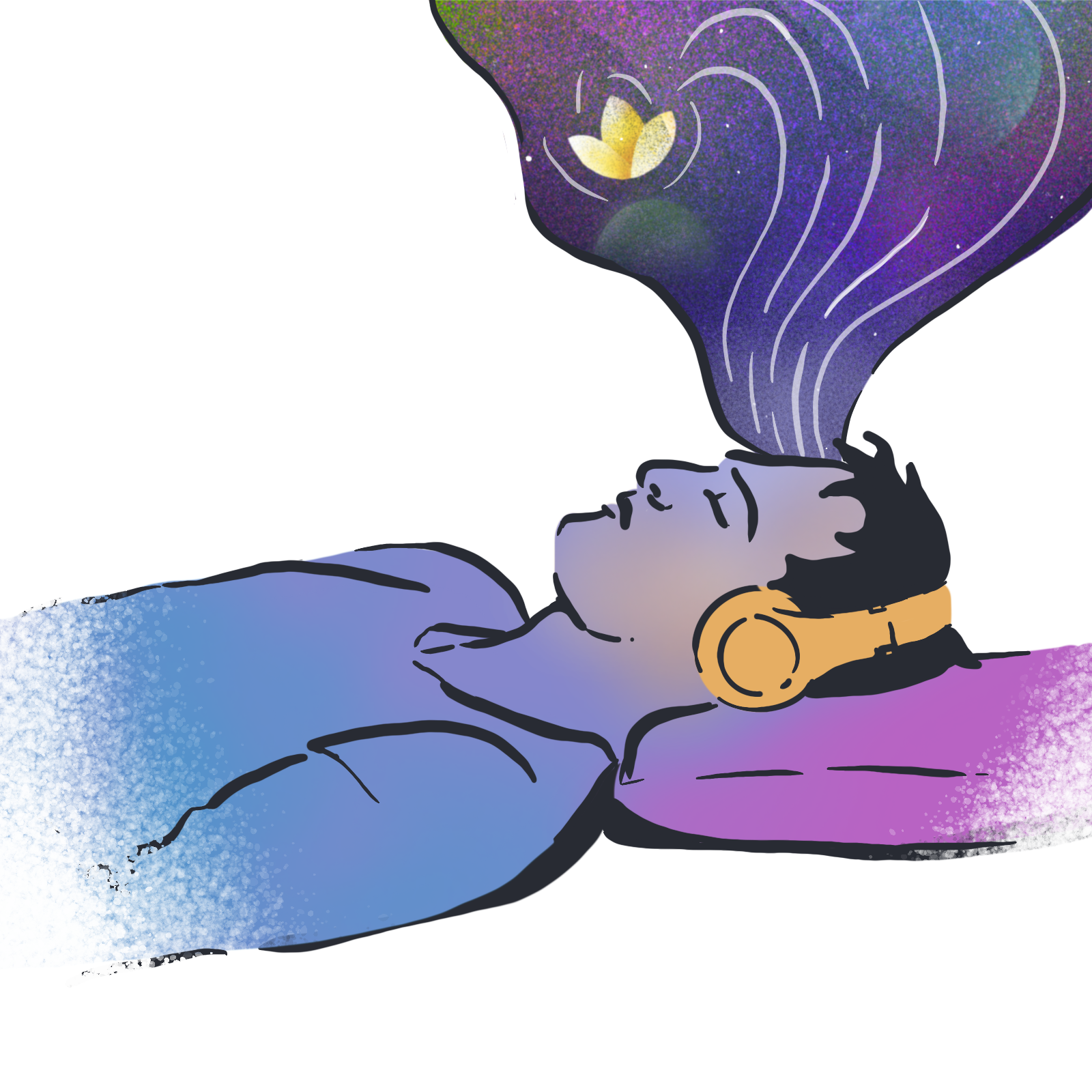
Mindfulness Pillar illustration. Guided meditation.
What are your illustration tools of choice and why?
For LIFE Ascent courses, my tools of choice are my iPad Pro and Procreate. I have a paper-like screen sticker that helps my drawing and the overall feel of working on a tablet. I would love to do a course in traditional materials, probably something like watercolor, gouache and ink. My traditional tools of choice are Bob’s charcoal, a Tombow eraser, chamois, compressed charcoal pencils and Rives BFK paper for drawing. For painting I love Golden acrylics and also love messing around with cheap craft store paint.
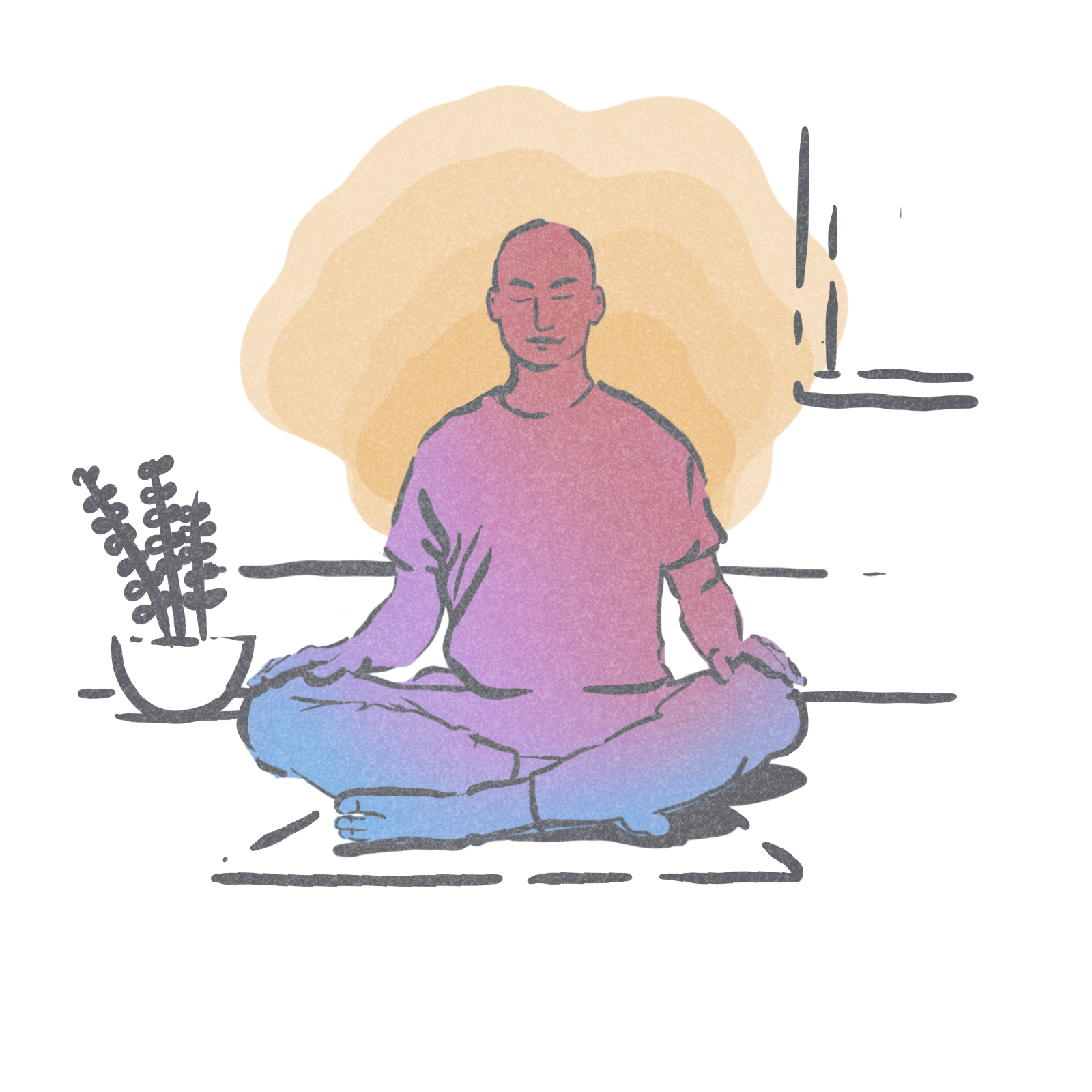
Mindfulness Pillar illustration

The LIFE Ascent success kit
Did you learn anything from your course illustration? About your artwork, health info or otherwise?
I learnt how to draw digitally, quickly and on a small scale. Also, I have enjoyed the amount of information I have learned along the way. I’m becoming quite the wellness expert! I can tell you a lot about why the 5 Pillars of Health are fantastic and strongly believe in small sustainable lifestyle changes.
I’ve also learned how easy Doryan makes Lifeology card illustrating look. I’ve been collaborating with him on some client courses, and sometimes he makes it look way too easy. I found it quite annoying at first because it took a little time to get to grips with drawing digitally—but I can live with it as he lets me use his texture brushes!
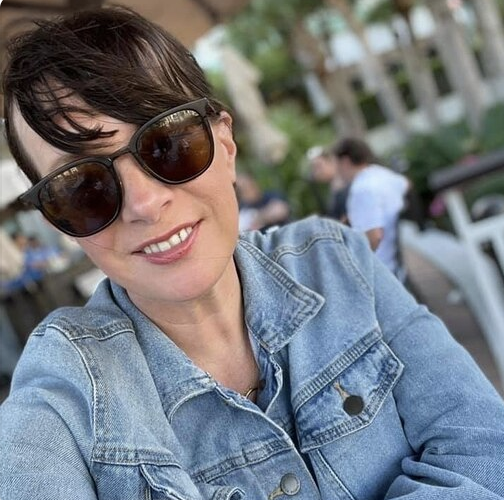
Elaine is the Lifeology Communications Manager and a veteran educator. She loves collaborating with the science community, storyboarding with artists, writing content and illustrating courses!
Instagram account: @artdesigneducator



